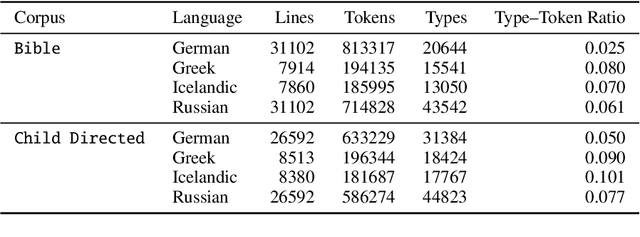Morphological Processing of Low-Resource Languages: Where We Are and What's Next
Paper and Code
Mar 16, 2022



Automatic morphological processing can aid downstream natural language processing applications, especially for low-resource languages, and assist language documentation efforts for endangered languages. Having long been multilingual, the field of computational morphology is increasingly moving towards approaches suitable for languages with minimal or no annotated resources. First, we survey recent developments in computational morphology with a focus on low-resource languages. Second, we argue that the field is ready to tackle the logical next challenge: understanding a language's morphology from raw text alone. We perform an empirical study on a truly unsupervised version of the paradigm completion task and show that, while existing state-of-the-art models bridged by two newly proposed models we devise perform reasonably, there is still much room for improvement. The stakes are high: solving this task will increase the language coverage of morphological resources by a number of magnitudes.
 Add to Chrome
Add to Chrome Add to Firefox
Add to Firefox Add to Edge
Add to Edge